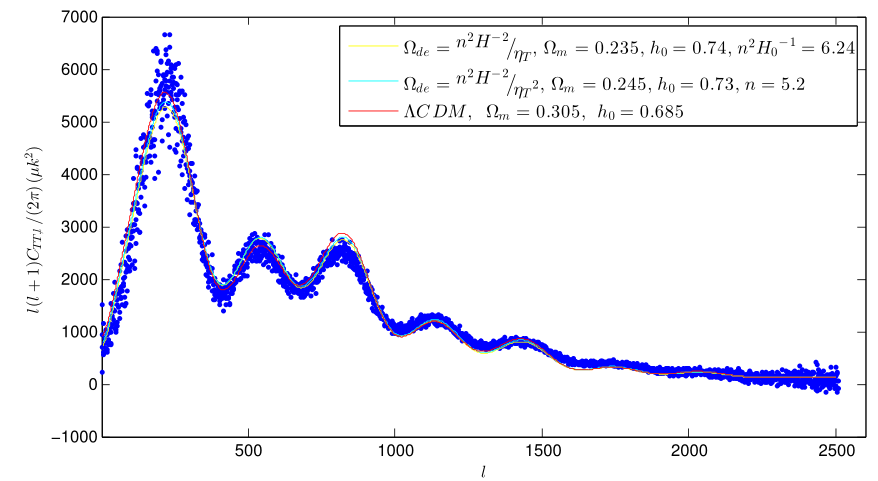Recently, new model and constraint on dark energy from quantum uncertainty was finished by fresh PhD HUANG Long and his supervisors Prof. YANG Xiaofeng, Prof. LIU Xiang in the galaxies and cosmology group at Xinjiang Astronomical Observatory (XAO) of the Chinese Academy of Sciences.
Previous studies found that the existence of dark energy and dark matter is the basis of current standard model of cosmology, so called ΛCDM model. Here, Λ is cosmological constant, which represents no evolution for dark energy and CDM is the abbreviation of cold dark matter. Although ΛCDM model is well acceptable to cosmological community, the origin of dark energy density and pressure is still mystery and there is a debate on evolution of dark energy.
In this study, the researchers analyzed the origin of dark energy density and pressure, and they proposed new special solution for the theoretical possibility to explain that the dark energy density is derived from the massless scalar bosons in vacuum. Following this theoretical hypothesis, they derived the new equation of state of dark energy, which can show the evolution character of dark energy.
These numerical results confirmed standard ΛCDM model by using of SNla Pantheon sample, which indicated dark energy has no evolution. However, when they used Planck 2018 CMB data, they found their model is better than standard model.
At the same time, they gave the statistical mean values of Hubble constant H0=73.2±1.3km s-1Mpc-1, which represents current expansion rate of our Universe.

Fig.1. Blue dots represent Planck 2018 CMB TT angular power spectra. The red, yell-ow, and cyan lines are the CMB theoretical values of angular power spectra from ΛCDM, Model I, and Model II, respectively. Here, we selected the best fitting values, which were constrained by Planck 2018 data.
Contact: HUANG Long, YANG Xiaofeng, ( Corresponding author)
Xinjiang Astronomical Observatory, Chinese Academy of Sciences
Email: huanglong@xao.ac.cn, xfyang@xao.ac.cn
Web: http://csnsdoc.ihep.ac.cn/article/doi/10.1088/1674-1137/ac2946